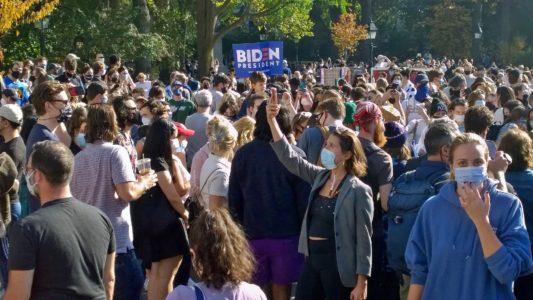Brooklynites are dubious about the benefits of tolling the now-free East River bridges, according to a poll released by Quinnipiac University on Monday, August 10.
The survey found that 41 percent of the borough supports the proposed toll – if it would enable the city to reduce tolls on currently-tolled outer borough crossings and further fund mass transit – while 52 percent oppose it.
The opposition to the concept strengthens considerably without the carrot of funding for mass transit; only 18 percent of Brooklynites supported the idea of tolls on the East River bridges in that case, with 74 percent against.
“Widespread opposition to the East River tolls shrinks, when it is linked to cutting other tolls and raising money for mass transit,” said Quinnipiac University Poll Assistant Director Maurice Carroll, calling the so-called-exchange a “savvy call.”
“It’s a classic maneuver,” said Bay Ridge driver Eddie D’Tomasso, who sits on the side of the slight majority, citing little to no guarantee that the promise would be kept. “There is no guarantee made that prices will stay lowered, or at they will maintain a ratio or relationship with the East River crossings. Saying that other crossings will become cheaper will get enough people to not oppose the new tolls but [the commuters] won’t have enough political capital to undo the tolls once they go into effect and everything inevitably gets raised.”
Dyker Heights resident Stefanie Frasca agreed.
“We all know that in less than a year and more years to come, all of the prices will increase and in the end it’s more money out of our pockets put into theirs,” she said, stressing that, while she doesn’t use those crossings often, she’s against tolling them. “Instead of claiming to lower the taxes [they should] promise to no longer increase them.”
“The proposal mentions that commercial vehicles will pay the tolls just once. That sounds like a logistical nightmare. Will it be tied to E-ZPass or the plates? Will drivers of commercial vehicles simply be able to swap E-ZPasses between vehicles?” added Ridge resident Andrey Teslya. “I just don’t see it happening, at least not in its current form.”
Staten Island resident Michael Courtien who travels to and from Brooklyn at least three times a week said that – even though he can never see the plan actually coming to fruition – it would be nice if it did.
“If it happens [and outer-borough bridge tolls actually decrease] I think it would be great, mainly due to the fact that the Verrazano Bridge will finally be reasonable,” he said. “It will be a huge weight off of commuters’ shoulders, especially those who travel on that bridge five days a week.”
According to Move NY – a region-wide grassroots campaign pushing the plan – it would help not only drivers (less congestion, better maintained roads) but also straphangers (more trains, more often), businesses (commercial vehicles would pay only one toll per day) and communities (less air pollution).
While tallies are similar for the Bronx (43-48), Manhattan (44-47) and Queens (44-51), all in opposition to the concept, Staten Islanders greatly prefer the idea of imposing a toll on the East River crossings, as long as it means a decrease in the cost of outer borough crossings, with 61 percent in support and only 31 percent in opposition.

 Locals weigh in after Biden declares victory
Locals weigh in after Biden declares victory